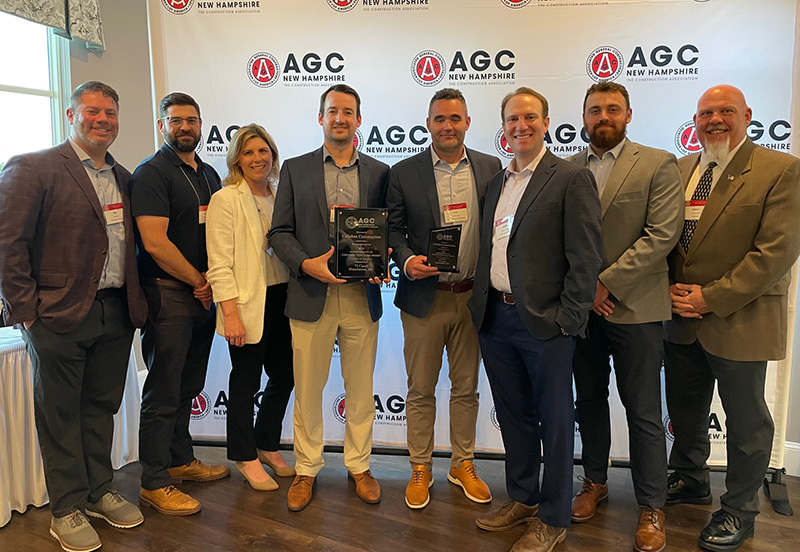News: Construction Design & Engineering
Posted: March 20, 2008
Highlights of the Changes in Nursing Home Care, 1996-2005: New York State report
A new analysis of trends in New York nursing home care reads like a summary of what is happening around the country. Changes in Nursing Home Care, 1996-2005: New York State was prepared in February 2008 for the Medicaid Institute at United Hospital Fund, with highlights from the report below.
Nursing homes aren't just providing long-term care anymore. Instead, they have come to play a more and more active role for people recuperating after a hospital stay. This movement toward short-term care is a response in part to financial pressures on hospitals to decrease length of stay and move patients out, and in part to decreased demand for long-term care beds, as other options have become more available for the elderly and disabled.
Not only has the number of short-term-stay patients with high levels of disability requiring rehabilitation increased dramatically, but longer-stay residents, too, have become more disabled, are more frequently cognitively impaired, and have more mental health diagnoses. The nursing home has come to play a bigger and bigger role in the care of individuals with mental health problems.
The last ten or so years have been tough for the "average" nursing home. In 1996, most facilities had a waiting list and it was assumed that with the graying of the population there would be unlimited demand. However, this has proven to be incorrect. The elderly increasingly have other options, and the average overall census at many facilities has been decreasing.
It's not only more difficult to find elderly residents but also to attract younger people in need of short-term stays, usually to recuperate after a hospitalization, before returning to their own homes. Regardless, admissions for many nursing homes have more than doubled. To do that facilities had to develop therapy programs, increase registered nurse staffing to handle the paperwork that comes with more admissions, start admitting patients on the weekend, and hire a part-time intake coordinator to compete with other nursing homes for these short-term admissions.
Over the years the number of patients discharged after a stay of less than two months increased substantially, while the number of residents leaving after four years actually decreased. As a result, discharge planning has become more and more time consuming.
More admissions are now covered by Medicare and private insurance. Private-pay clients were formerly counted on to subsidize Medicaid, but the number of Private-pay days has decreased over the past ten years. Medicaid still accounts for almost 70% of a facility's revenue.
Although the average age of a nursing facility's residents has not changed much (decreasing from a little over 80 to a little over 79), more younger residents are moving through facilities than ever before, and elderly residents are older than those of ten years ago. It takes a lot more work to develop a reasonable plan for continued care in the community for younger short-stay patients admitted for rehabilitation before returning home. They also demand amenities like cable TV, phone, and internet access. They want more choices at mealtime, and often prefer not to mingle with the older, often cognitively impaired, residents.
Residents in general - both long- and short-term - have become harder and harder to care for. They have higher levels of functional disability, more diagnoses, more need for medications and various therapies. Nearly two-thirds of long-stay residents are cognitively impaired, and half often display behavioral symptoms such as wandering and resisting care, or are verbally or physically abusive. The percentage with psychiatric diagnoses has also increased; now nearly half of long-stay residents and over 30 percent of short-stay patients are diagnosed with anxiety disorder, depression, bipolar disease, or schizophrenia.
Administrative and operating costs have climbed, as well. The industry-wide shortage of health care workers has driven wages up and, as facilities try to compete with hospitals for workers, costs have risen concomitantly. The workload in almost every department - nursing, therapies, activities, social work, medical records, and the business office - has increased to keep up with residents' demands, again increasing costs.
It's good to see people living longer in their own homes and using nursing homes to help them get better and return to their lives in the community. But it's difficult for the average nursing facility to meet the differing demands of both short-term patients and long-term residents at the same time.
Michael Bertrand, MAI, is the principal of Bertrand & Associates, Tolland, Conn.
MORE FROM Construction Design & Engineering
Nobis Group awards Robinson and Moreira STEM scholarships
Concord, NH Nobis Group, a 100% employee-owned consulting firm specializing in engineering and environmental solutions across the Northeast, has named the recipients of its 2025 STEM Scholarship: Andie Moreira of

Quick Hits
Columns and Thought Leadership

Ask the Electrician: Is summer a prime time for commercial electrical maintenance?
The answer is “Yes!” While January marks the official new year, many businesses view September as a fresh start. This makes summer an ideal time for commercial property owners to schedule long-term electrical maintenance projects.

Careers in Construction Month focus on training and safety - by Joe Camilo
October is Careers in Construction Month, and rarely has it been more consequential. According to our chapter’s national parent organization, the construction industry needs to attract half-a-million new workers in the coming year to meet demand. Addressing that need is a huge job, but we at ABC MA are trying to do our part.

The rise of incubators and co-working spaces: The latest in life sciences - by Matt Combs
In recent years, the life science industry has witnessed a shift in how companies operate and innovate. One of the key driving forces behind this transformation is the emergence of incubators and co-working spaces specifically tailored to meet the unique budget and schedule needs of startups.

The design-build advantage: Integrated interior design solutions - by Parker Snyder
When it comes to corporate interior spaces for both commercial and industrial projects, partnering with a design-build firm with in-house interior design services can offer clients many benefits. Unlike traditional delivery methods where interior designers operate independently from the design and construction teams, often creating a longer project timeline as cost negotiations and revisions ensue







